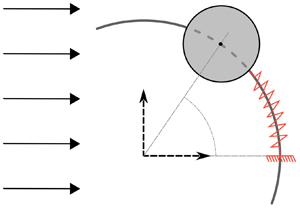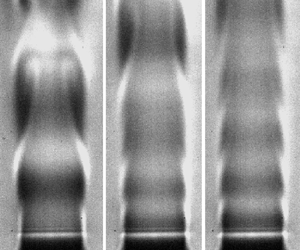Refine listing
Actions for selected content:
1417366 results in Open Access
Understanding the First Paralogism: A Friendly Disagreement
-
- Journal:
- Kantian Review / Volume 29 / Issue 2 / June 2024
- Published online by Cambridge University Press:
- 04 April 2024, pp. 289-298
- Print publication:
- June 2024
-
- Article
-
- You have access
- Open access
- HTML
- Export citation
Flow-induced vibrations with and without structural restoring force: convergence under the effect of path curvature
-
- Journal:
- Journal of Fluid Mechanics / Volume 984 / 10 April 2024
- Published online by Cambridge University Press:
- 04 April 2024, A51
-
- Article
-
- You have access
- Open access
- HTML
- Export citation
Embodied technological progress, heterogeneous multiworker firms, and unemployment
-
- Journal:
- Macroeconomic Dynamics / Volume 29 / 2025
- Published online by Cambridge University Press:
- 04 April 2024, e8
-
- Article
- Export citation
Pollen movement of the endemic Agave cupreata by bats and birds in western Mexico
-
- Journal:
- Journal of Tropical Ecology / Volume 40 / 2024
- Published online by Cambridge University Press:
- 04 April 2024, e10
-
- Article
- Export citation
Range inclusion and diagonalization of complex symmetric operators
- Part of
-
- Journal:
- Canadian Journal of Mathematics / Volume 77 / Issue 4 / August 2025
- Published online by Cambridge University Press:
- 04 April 2024, pp. 1222-1242
- Print publication:
- August 2025
-
- Article
- Export citation
Working Oneself Up and Universal Basic Income
-
- Journal:
- Kantian Review / Volume 29 / Issue 2 / June 2024
- Published online by Cambridge University Press:
- 04 April 2024, pp. 239-247
- Print publication:
- June 2024
-
- Article
-
- You have access
- Open access
- HTML
- Export citation
RADIOCARBON AGES OF PLANT REMAINS IN MASSIVE GROUND ICE AND UNDERLYING SEDIMENTS OF THE BARROW PERMAFROST TUNNEL, ALASKA
-
- Journal:
- Radiocarbon / Volume 66 / Issue 5 / October 2024
- Published online by Cambridge University Press:
- 04 April 2024, pp. 879-891
- Print publication:
- October 2024
-
- Article
-
- You have access
- Open access
- HTML
- Export citation
The Constitution of Virtual Objects
-
- Journal:
- Dialogue: Canadian Philosophical Review / Revue canadienne de philosophie / Volume 64 / Issue 2 / August 2025
- Published online by Cambridge University Press:
- 04 April 2024, pp. 263-283
-
- Article
-
- You have access
- Open access
- HTML
- Export citation
BCP volume 52 issue 3 Cover and Back matter
-
- Journal:
- Behavioural and Cognitive Psychotherapy / Volume 52 / Issue 3 / May 2024
- Published online by Cambridge University Press:
- 04 April 2024, pp. b1-b5
- Print publication:
- May 2024
-
- Article
-
- You have access
- Export citation
‘A New Prague Spring, but from Below?’ Socialist Dissent in the Last Soviet Generation and the Emergence of Solidarność in Poland, 1980–1981
-
- Journal:
- Contemporary European History / Volume 34 / Issue 1 / February 2025
- Published online by Cambridge University Press:
- 04 April 2024, pp. 58-74
- Print publication:
- February 2025
-
- Article
-
- You have access
- Open access
- HTML
- Export citation
Comment on: Fürsich et al., 2023, Miocene instead of Jurassic: the importance of sound fieldwork for paleontological data analysis
-
- Journal:
- Journal of Paleontology / Volume 98 / Issue 3 / May 2024
- Published online by Cambridge University Press:
- 04 April 2024, pp. 434-445
-
- Article
- Export citation
Rereading the Wages for Housework Campaign: Feminist Degrowth Reflections on Social Reproduction, Commons, and a Care Income
-
- Article
-
- You have access
- Open access
- HTML
- Export citation
Monetary policy in advanced and emerging economies
-
- Journal:
- Macroeconomic Dynamics / Volume 29 / 2025
- Published online by Cambridge University Press:
- 04 April 2024, e9
-
- Article
-
- You have access
- Open access
- HTML
- Export citation
The Evolving Role of Electroencephalography in Postarrest Care
-
- Journal:
- Canadian Journal of Neurological Sciences / Volume 52 / Issue 2 / March 2025
- Published online by Cambridge University Press:
- 04 April 2024, pp. 192-204
-
- Article
-
- You have access
- Open access
- HTML
- Export citation
Chaos via type-II intermittency in a forced globally unstable jet
-
- Journal:
- Journal of Fluid Mechanics / Volume 984 / 10 April 2024
- Published online by Cambridge University Press:
- 04 April 2024, R8
-
- Article
-
- You have access
- Open access
- HTML
- Export citation
Ian Proops: Kant on Transcendental Freedom (The Fiery Test of Critique: Chs. 11–12)
-
- Journal:
- Kantian Review / Volume 29 / Issue 2 / June 2024
- Published online by Cambridge University Press:
- 04 April 2024, pp. 309-316
- Print publication:
- June 2024
-
- Article
- Export citation
Low juvenile survival threatens the Black Stork Ciconia nigra in northern Europe
-
- Journal:
- Bird Conservation International / Volume 34 / 2024
- Published online by Cambridge University Press:
- 04 April 2024, e10
-
- Article
-
- You have access
- Open access
- HTML
- Export citation
Clarifying the role of inhibitory control in L2 phonological processing: A preregistered, close replication of Darcy et al. (2016)
-
- Journal:
- Studies in Second Language Acquisition / Volume 46 / Issue 5 / December 2024
- Published online by Cambridge University Press:
- 04 April 2024, pp. 1392-1412
- Print publication:
- December 2024
-
- Article
-
- You have access
- Open access
- HTML
- Export citation
Invasive haemodynamics predict outcomes in paediatric pulmonary artery hypertension
-
- Journal:
- Cardiology in the Young / Volume 34 / Issue 7 / July 2024
- Published online by Cambridge University Press:
- 04 April 2024, pp. 1563-1570
-
- Article
-
- You have access
- Open access
- HTML
- Export citation



























